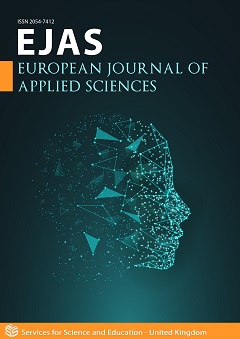Performance, Serum Biochemical and Haematological Response of Broiler Chicken Fed Mixture of Ginger (Zingiber Officinale) and Garlic (Allium Sativum) in Diets
DOI:
https://doi.org/10.14738/aivp.102.12216Keywords:
performance body weight, serum biochemical and hematological indices, Allium sativum, Zingiber officinaleAbstract
Performance, serum biochemical and hematological response of broiler chicken fed mixture of ginger (Zingiber officinale) and garlic (Allium sativum) in diets was investigated in a feeding trials using completely randomised design that lasted for eight weeks. A total of 135 1-day broiler chicks of Abor acre strain were randomly allotted to three dietary treatments of 45 chicks per treatment and replicated 15 chicks per treatment Three isocaloric and isonitrogenous diets were formulated and fed. Control diet was without mixture of ginger and garlic. The two other diets were T1, 7.5g Ginger plus 7.5g Garlic mixture/25kgdiet and T2, 15g Ginger plus 15g Garlic mixture/25kgdiet. The experimental diets were offered to the respective birds with water ad libitum. The body weight gain (Kg) feed intake and feed conversion ratio (FCR) of birds control, T1 and T2 respectively were similar (p> 0.05). Birds on diet. T2 recorded the highest live ability percentage (96 Mixture of ginger and garlic in ratio 1:1 up to 7.5g each in 25kg diets slightly but insignificantly (p>0,05) increased performance body weight gain and live ability improved feed conversion ratio (FRC) but reduced feed intake. Variation in the experimental diets had no significant (p>0.05) difference on serum biochemical and hematological indices except for Glucose and Alkaline Phosphate, and White Blood Cell count Lymphocytes and Basophil which showed significant (p<0.05) difference with the level mixture of ginger and garlic in diets. Mixture of ginger and garlic in the diets of broiler chicken had no adverse effect on the serum biochemical and hematological indices.
Downloads
Published
How to Cite
Issue
Section
License
Copyright (c) 2022 J. I. A. Umoru, F. P. Agbaye

This work is licensed under a Creative Commons Attribution 4.0 International License.






